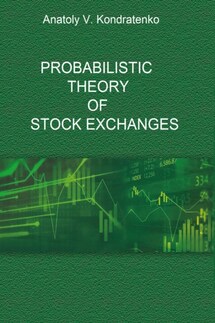Probabilistic Economic Theory - страница 20
We begin with the requirement that the graphical scheme of the physical models must be similar to the picture of the many-particle physical systems, such as polyatomic molecules, for instance. Main elements of our physical models of economic systems are shown schematically in Fig. 1. A large sphere covers a market subsystem or economy consisting of active market subjects: buyers who have financial resources and a desire to buy goods or commodities, and sellers who have goods or commodities and a desire to sell them. They are the sellers and the buyers who form supply and demand (S&D below) in the market. Small dots inside the sphere denote buyers, and big ones denote sellers. The cross-hatched area outside the sphere represents the institutional and external environments, or more exactly, internal institutions such as the state, government, society, trade unions etc., and the external environment including other markets and economies, natural factors etc. It is evident that all elements and factors of the system influence each other; buyers compete with each other in the market for goods and sellers compete with each other for the money of buyers. Buyers and sellers interact with each other, permanently influencing each other’s behavior. Institutions and the external environment influence all the economic agents, including not only businesses but also ordinary people. In other words, all the economic agents are influenced by institutional and external environments and interact with each other.
Fig. 1. The physical model scheme of an economic system: a market consisting of the interacting buyers (small dots) and sellers (big dots) who are under the influence of the internal institutions and the external environment beyond the market (covered by the conventional imaginary sphere).
In order to develop a physical model of the economic system, it is necessary to learn to describe in an exact, mathematical way both movements (behaviors and influences) of each economic agent, i.e., buyers and sellers, the state and other institutions etc., and interactions with each other. It is the goal to derive equations of motion for market agents – the buyers and sellers – who determine the dynamics, movement, or evolution of the market system in time.
2. The Economic Multi-Dimensional Price-Quantity Space
As we already discussed above, in order to show the movement or dynamics of an economy it is necessary to introduce a formal economic space in which this movement takes place. As an example of such space we can choose a formal price space designed by the analogy with a common physical space. We choose the prices P>iof the i-th item of goods as coordinate axes: i = 1, 2,…, L, where L is the number of items or goods (the bold P will designate below all the L price coordinates). In case there is only one good, the space is one-dimensional and represented by a single line. The coordinate system for the one-dimensional space is shown in Fig. 2.
The distance between two points in one-dimensional space p' and p" can be for instance determined by the following:
If two goods are traded on the market (L = 2), the space is a plane; the coordinate system is represented in this case by two mutually perpendicular lines (see Fig. 3).
The distance between two points p' and p" can be determined as follows:







